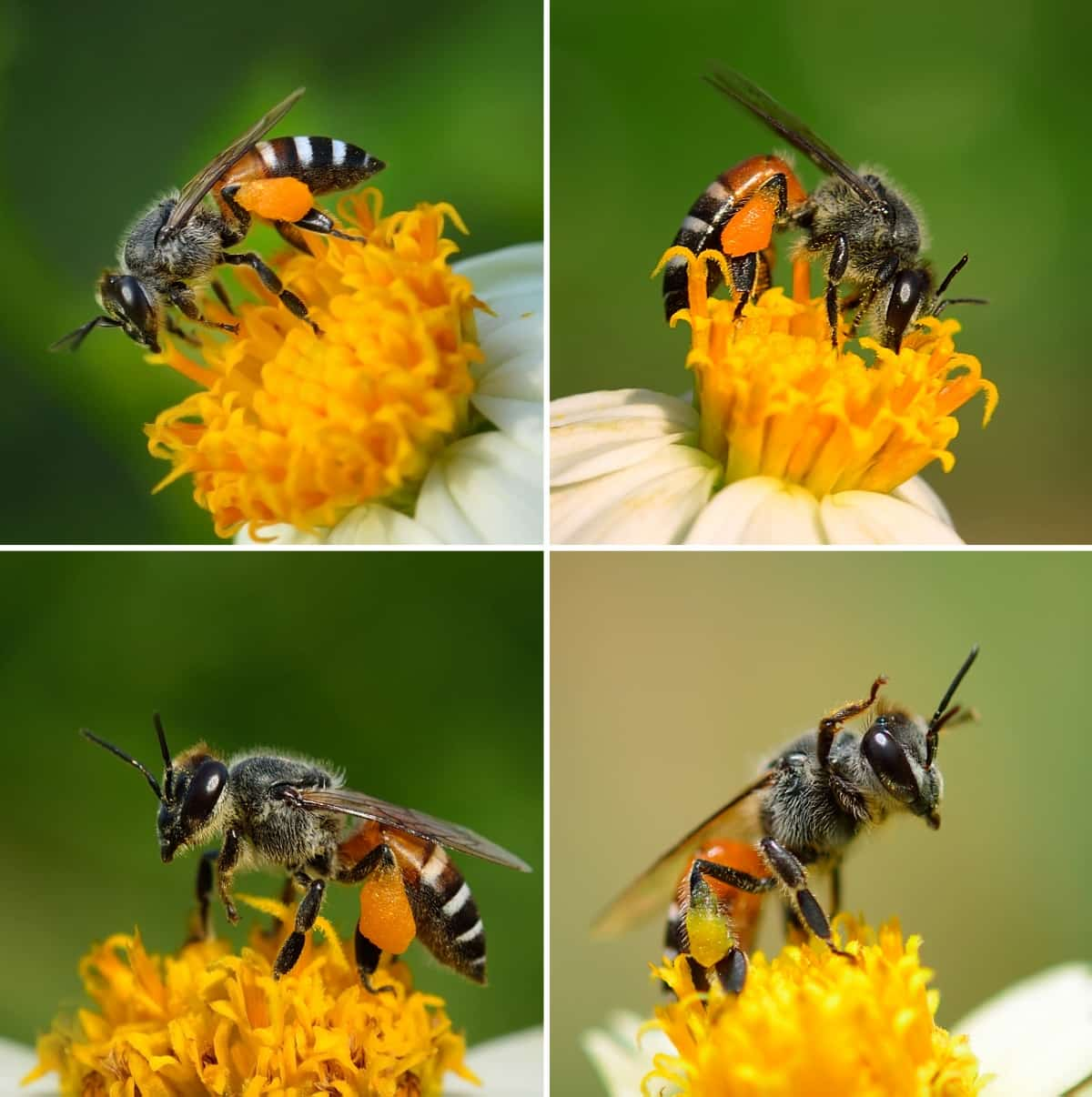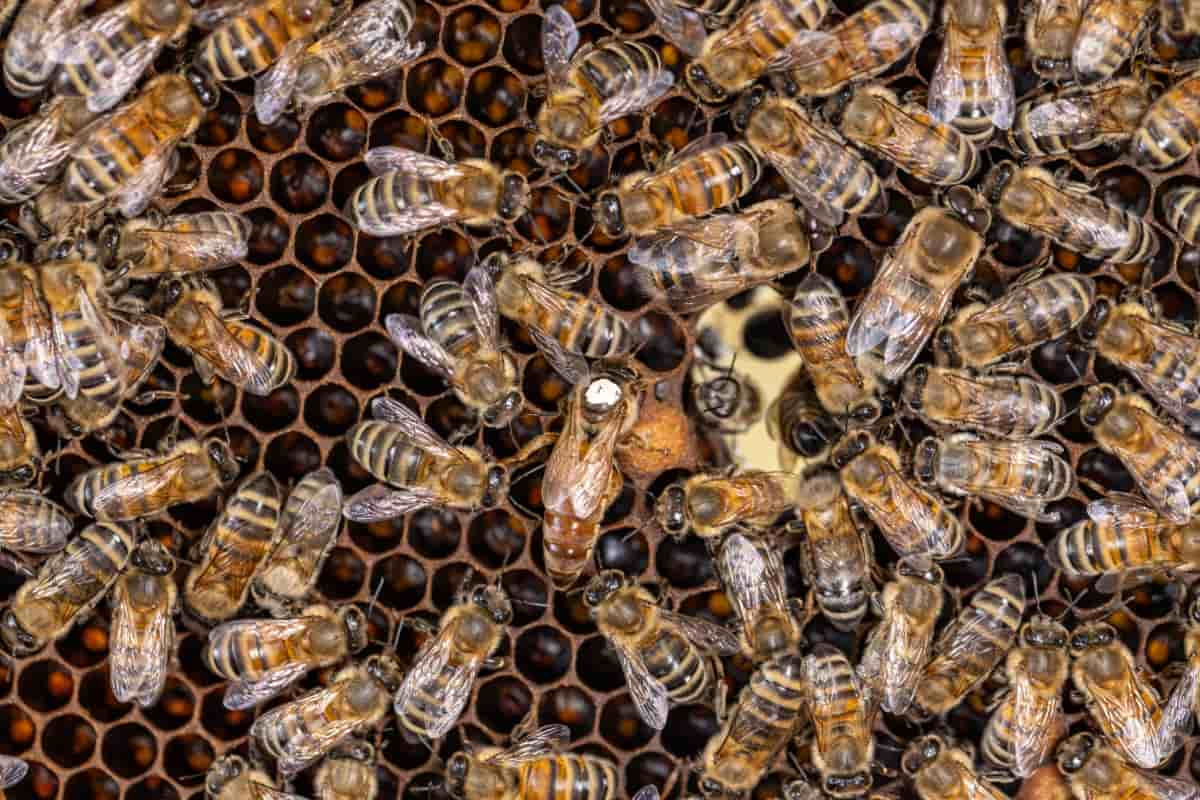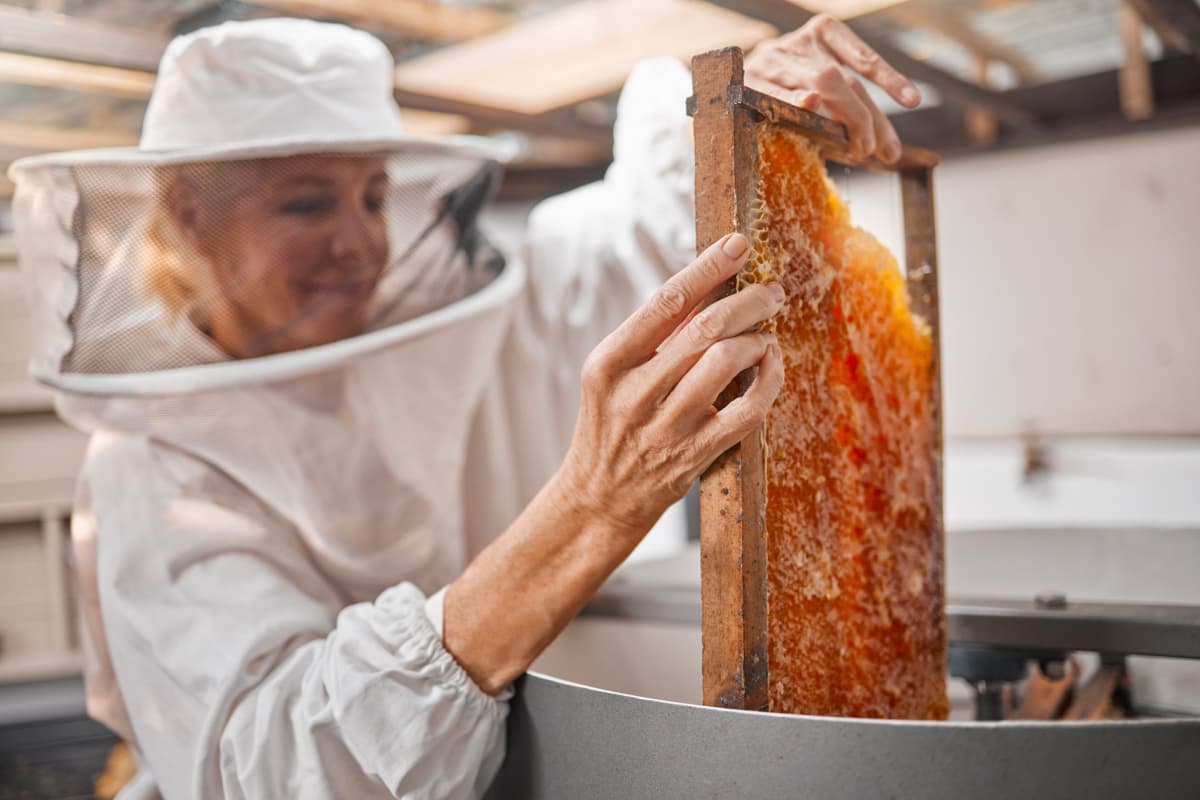Honeybees play a vital role in Indian agriculture, serving as the unsung heroes of our ecosystem. Beekeeping in India has a rich history, with indigenous honeybee species thriving in diverse landscapes across the country. India is home to four major honeybee species: Apis Cerana Indica, Apis Dorsata, Apis Florea, and Apis Mellifera. Each species has its unique characteristics and importance in our local ecosystems.
Importance of Honeybees in Indian Agriculture
The significance of honeybees cannot be underestimated, as they provide essential pollination services that help improve agricultural productivity and ensure food security. Their contribution extends beyond just producing delicious honey; they facilitate fruit set and seed production for many crops such as fruits, vegetables, oilseeds, spices, and nuts.

Honey Bee Species in India
Apis Cerana Indica: The Indian Honeybee
Characteristics of Apis Cerana Indica
The Indian Honeybee, also known as Apis Cerana Indica, is a species of honeybee native to India. It is smaller in size compared to its European counterpart, the Western Honeybee. Apis Cerana Indica has distinct characteristics that set it apart from other honeybee species. One notable characteristic of Apis Cerana Indica is it adapts and thrives in diverse climates and landscapes across India.
Role in Local Ecosystems and Agriculture
In addition to their role as pollinators, Apis Cerana Indica plays a crucial role in maintaining local ecosystems by aiding in the reproduction of plants through cross-pollination. This contributes to biodiversity conservation and ensures the sustainability of natural habitats. Furthermore, these bees are highly valued for their honey production capabilities. The honey produced by Apis Cerana Indica beekeeping is known for its unique flavor profile and medicinal properties. In many rural communities, beekeeping with this indigenous species provides an additional source of income for farmers.
Apis Dorsata: The Giant Honeybee
Physical Traits and Behavior of Apis Dorsata
The Giant Honeybee, Apis Dorsata, is a fascinating species known for its impressive physical traits and unique behavior. These bees are the largest among all honeybees found in India, with a wingspan that can reach up to 3 centimeters. They have distinct black bodies with yellow stripes and large mandibles.
One of the most intriguing aspects of Apis Dorsata is their nesting behavior. Unlike other bee species that build hives inside tree hollows or man-made structures, these bees construct enormous single-comb nests hanging from high branches. These massive nests are made using wax secreted by the worker bees themselves.
Harvesting Wild Honey from Apis Dorsata
Harvesting wild honey from Apis Dorsata requires great skill and expertise. It is truly an adventure as beekeepers must climb tall trees to access the suspended combs without any protective gear. The process involves carefully cutting out sections of the comb containing honey while ensuring minimal disturbance to the colony.
However, it’s important to note that harvesting wild honey should be done sustainably and responsibly to protect these important pollinators. Beekeepers need to leave enough honey behind for the colony’s survival during lean periods. Despite its challenges, harvesting honey from Apis Dorsata provides not only delicious natural honey but also serves as an income source for many local communities in rural areas of India.
Apis Florea: The Dwarf Honeybee
Identifying Apis Florea
If you’ve ever come across a tiny honeybee buzzing around your garden or balcony, chances are it could be the Apis Florea, also known as the Dwarf Honeybee. When it comes to Dwarf Honeybee Characteristics, despite its small size, this species plays a key role in pollination and honey production in India.
Identifying the Apis Florea is quite simple. They are smaller than other honeybees and have distinctive yellow stripes on their abdomen. You may spot them building their nests in unusual locations like tree branches, attics, or even inside empty containers. These pint-sized bees thrive not just in rural areas but also adapt well to urban settings. They can make use of available flowers and plants found in gardens, parks, or even potted plants on balconies for nectar collection.
Apis Florea in Urban and Rural Settings
In rural environments with vast fields and flowering crops, the Apis Florea contributes to agricultural productivity by aiding cross-pollination. Their small size allows them to access narrow flowers that larger bees cannot reach easily. Despite being lesser known compared to other honeybee species like the Indian Honeybee, the Dwarf Honeybee has an important place within our ecosystem. Its ability to survive and thrive in both urban and rural landscapes showcases its resilience as an essential pollinator contributing towards biodiversity conservation.
Apis Mellifera: The Western Honeybee in India
Introduction and Adaptation of Apis Mellifera
Apis Mellifera is not native to India but has been introduced and adapted well in the country. They were brought to India for their honey production and pollination services. Unlike the native Indian honeybee species, Apis Mellifera has certain distinct characteristics. One key difference of Western honeybees is their size – they are larger than most Indian honeybees.
In terms of adaptation, Apis Mellifera has thrived in various regions across India. They have been successful at pollinating a wide range of crops, including fruits, vegetables, and oilseeds. Due to their efficiency in gathering nectar from flowers, these Western HoneyBees have contributed significantly to improving crop yield and quality.
Comparison with Native Indian HoneyBees
However, it’s important to note that the introduction of Apis Mellifera also poses a potential threat to native Indian bee species. There is concern about genetic contamination through crossbreeding with wild populations or competition for resources such as food and nesting sites. Despite this concern, many beekeepers in India choose Apis Mellifera for commercial purposes due to its high honey production capabilities and ease of management. The Western Honeybee has become an integral part of modern beekeeping practices in the country.
In case you missed it: Small-scale Beekeeping Project Report: Economics of Honey Bee Farming Costs and Profits for 5 Hives

Beekeeping Practices with Native Indian Honeybees
Traditional vs. Modern Beekeeping Techniques
Beekeeping in India has a rich history, with both traditional and modern techniques being practiced by beekeepers across the country. Traditional Indian Beekeeping methods have been passed down through generations, with local communities using indigenous knowledge to care for their honeybees. These traditional practices often involve the use of log hives or earthen pots as beehives, allowing the bees to build their combs naturally.
Beekeepers rely on smoke or fire to calm the bees during hive inspections and harvests. This close connection between humans and bees is deeply rooted in Indian culture and showcases a harmonious relationship with nature. On the other hand, modern beekeeping techniques have also gained popularity in recent years. These methods involve using standardized equipment like wooden boxes known as Langstroth hives, which allow for easier management of colonies and harvesting of honey.
Sustainable Beekeeping Practices
Sustainable beekeeping practices in India are crucial for maintaining healthy honeybee populations while ensuring a steady supply of honey. This involves providing adequate nutrition for the bees through planting diverse floral sources nearby. Additionally, avoiding the use of chemical pesticides near beehives helps protect them from harmful effects. It’s important to note that both traditional and modern approaches have their benefits and Beekeeping Challenges in India when it comes to managing native Indian honeybee species.
Pest and Disease Management in Indian Honeybees
Common Threats to Indian Honeybees
These bees face several common threats that can have a detrimental impact on their populations. One such threat is the Varroa mite, which feeds on bee larvae and weakens the entire colony. Another common pest is the small hive beetle, which destroys honeycombs and contaminates stored honey.
Integrated Pest Management (IPM) Strategies
To combat these threats, integrated pest management strategies are employed by beekeepers. Integrated pest management strategies involve using a combination of cultural practices, biological controls, and chemical treatments to manage pests. For example, regular monitoring of hives helps detect early signs of infestation so that appropriate measures can be taken promptly.
Cultural practices include maintaining clean apiaries and providing adequate nutrition for strong colonies. Biological controls involve introducing natural predators or parasites that target specific pests without harming the bees themselves.
Conservation Efforts for Indian Honeybees
Protecting Native Bee Species
Protecting the native bee species in India is crucial to maintaining a healthy ecosystem and ensuring sustainable agriculture practices. Recognizing this importance, various Indian Honeybee Conservation programs and policies have been implemented to safeguard the honeybee population.
One such initiative is focused on creating protected areas specifically for honeybees. These designated areas provide a haven for the bees by preserving their natural habitats and minimizing human interference. Additionally, these protected areas also serve as research hubs where scientists can study the behavior, breeding patterns, and overall health of different honeybee species.
Role of Conservation Programs and Policies
Through educational campaigns and training workshops, farmers are encouraged to adopt bee-friendly agricultural practices that minimize pesticide usage while maximizing crop yields through effective pollination. Furthermore, government policies play a vital role in protecting native bee populations. By implementing regulations on pesticide use and encouraging organic farming methods, policymakers contribute to creating an environment where honeybees can thrive without being exposed to harmful chemicals.
In case you missed it: Bee Breeding and Genetics: Improving Honey Bee Stock

The Economic Impact of HoneyBees in India
Honey Production and Market Trends
The economic impact of honeybees in India is significant with honey production and the beekeeping industry playing a crucial role in the country’s agricultural sector. India is one of the top honey-producing countries globally, contributing to both domestic consumption and export markets. Honey production has witnessed steady growth over the years, driven by the demand for natural and organic products.
Beekeeping as a Source of Livelihood
Beekeeping serves as a source of livelihood for many rural communities across India. It provides employment opportunities to farmers, especially during lean agricultural seasons. Additionally, beekeeping enhances crop pollination, leading to increased yields and improved quality of fruits. The market trends for honey have been encouraging in recent times with rising consumer awareness about its health benefits. Honey is not only used as a sweetener but also finds applications in traditional medicine, skincare products, and culinary delights.
In case you missed it: How to Grow Honeyberries from Seed and Cuttings: Varieties, Companion Plants, Pollination, and Care

Conclusion
In India, honeybees play a crucial role in pollination and the production of delicious honey. With an abundance of diverse flora and fauna, India is home to several species of honeybees. Every species has its unique characteristics and habits that contribute to its important role in our ecosystem.
- Feed Your Flock for Less: Top 10 Tips to Save on Chicken Feed
- Ultimate Guide to Ossabaw Island Hog: Breeding, Raising, Diet, and Care
- Hatching Answers: The Top 10 Reasons Your Chickens Aren’t Laying Eggs
- Eggs and Economics: Breaking Down the Cost of Raising Backyard Chickens
- Defend Your Greens: Proven Methods to Keep Iguanas Out of Your Garden
- Ultimate Guide to Cinnamon Queen Chicken: A Comprehensive Guide for Beginners
- Ultimate Guide to California Tan Chicken: Breeding, Raising, Diet, Egg-Production and Care
- Ultimate Guide to Marsh Daisy Chicken: Breeding, Raising, Diet, and Care
- 10 Types of Chicken Farming Businesses You Can Start for Profits